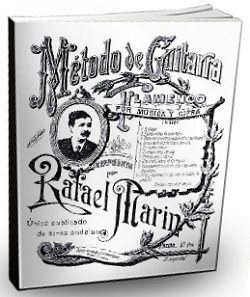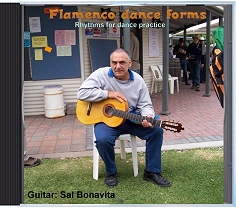
Playing for dancers
Here are some other bits worth reading
The following snippits are from Flamenco FAQ for Classical Guitarists
The three rules of accompaniment: 1) Stay in compás. 2) Stay in compás. 3) Stay in compás. How do I learn to accompany? .....it can't be done by ordering a book or tape. You've got to go find some flamencos.
1. Find another guitarist who accompanies and take lessons, or watch, listen, spy, whatever.
2. Start building a collection of recordings (including videos if you can get them), and
listen, listen, listen. If you're just starting, the older anthologies are usually better for picking out basic
ideas. Contemporary flamenco is pretty jazzy, and while the bones are there, they can be pretty obscure. It helps
to go shopping with a knowledgeable flamenco to find the nuggets (if any) at your local stores. Obviously
solo guitar recordings aren't going to be too helpful. Neither are the Gypsy Kings for anything but
rumbas. Camaron and Paco are great models, but pretty hi-tech. Student dancers rarely have the chance to work on their own with guitarists, so they're often eager to find ANYONE who plays. It can really help to pair up with a compatible "buddy" and pool resources. One way around the "blind leading blind" syndrome is for you and your buddy (student singer/dancer) to arrange for a private session for both of you with *both* pros just before or after a rehearsal, when they'd both be there anyway. Probably worth it, even if expensive. The flamencos I'm talking about will at least know you're serious if you propose such a thing, and unless they're on ego trips, may well do their best to accommodate you. Some guitar teachers accompany the classes of the dancers with whom they work (or their students do), and of these some will allow or encourage you to sit in. Invaluable. ....you're not a flamenco guitarist by flamenco standards if you can't accompany singers and dancers.
Compás is Spanish for 1) rhythm, generally, 2) measure -- a coherent unit of rhythm, 3) the characteristic rhythm of a particular form. Thus, "he has good compás" means he has a good sense of rhythm. "The introduction is 4 compás long" means something like (but not exactly) "it's four measures long." "I play this in the compás of tientos" means I play it with the same rhythm you'd hear in tientos.
For accompaniment, compás is King.
The following quotes are from DCFlamenco Article
"So you want to play for dance classes?" "If a beginner guitarist would like to learn to accompany, it's fine to start with a beginner level dance class." "Don't try a midlevel or advanced class unless there is a professional level guitarist playing, and then be content to play '2nd fiddle' and take his/her advice." "Be prepared to play rhythm and chords. Dance classes don't need fancy falsetas, and in fact these can be more of a hindrance than a help. Besides - the guitarist will learn a lot by playing rhythm and watching and listening to the dancers for each tempo change. Falsetas come later."
"I don't think of a guitarist as a Flamenco Guitarist unless they can accompany (in my humble opinion). What
defines flamenco is the connection of the artists to the compás, as I have said before; flamenco is an
individual artform, but it is a group experience. And sitting in class playing
for dancers is the only way to learn, first sitting next to a more experienced player and then by
yourself."
| ||
|
hersoveela
Guitar videos
Nylon guitar songs
Song videos
Download my CD
Flamenco Dance Forms

Flamenco guitar method 1902

